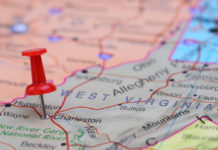Seven people died of suspected drug overdoses at the Trip to the Moon music festival in Hanoi, Vietnam on September 16. That same weekend, two people allegedly died of drug overdoses at the Lost Lands music festival in Thornville, Ohio. The previous week, two attendees at the Defqon. 1 music festival in Sydney also died from reported overdoses while numerous festivalgoers sought medical assistance due to issues related to drug use.
These drug-related incidents are some of the most recent in a trend occurring at music festivals around the world, causing government and healthcare officials from multiple countries to determine new methods to address illicit substance abuse.
Illicit substances were used by nearly 42 percent of people between the ages of 19 and 28, according to the national Monitoring the Future survey published by the University of Michigan in July. Survey facilitators also found that marijuana use for this age group is experiencing its highest rates in 32 years. While use of LSD and other hallucinogenic drugs registered a slight increase last year, MDMA use has seen a significant decline since 2016.
However, MDMA appeared to be the third most commonly-consumed substance at U.S. music festivals, according to a 2018 TickPick survey of more than 1,000 festivalgoers from 10 different festivals between the ages of 18 and 74. While attendees reported the highest rates of alcohol or marijuana use, 13 percent admitted taking MDMA. Marijuana, MDMA, mushrooms, LSD and cocaine use appeared to generally increase if a ticket-holder had a VIP pass.
Electric Daisy Carnival, Ultra and Bonnaroo reportedly had some of the highest substance abuse rates among patrons in the past year. Other festivals — such as SXSW, Austin City Limits and Hangout — saw lower rates of MDMA, cocaine and mushrooms use.
Burning Man’s high rates of marijuana, mushrooms and LSD use may be attributed to the festival’s non-consumerist model — although tickets can cost up to $1,200, all goods and services at the festival are traded or shared in lieu of money.
Although many studies and articles detail the potential dangers of using drugs at music festivals, others are often published prior to the events that seemingly encourage drug use or detail ways people have hidden drugs from security.
For example, some news outlets published articles leading up to past Coachella festivals that recommended possible ways to pair drugs with the music of certain performers in the lineup.
Many government, law enforcement and healthcare officials in different countries have expressed concern over guest safety at music festivals and are considering multiple measures to approach the problem.
While some individuals advocate for shutting down certain festivals in the future to avoid further deaths, others believe that increased security and other drug education or prevention efforts may be more effective.
Following the mass shooting at the Route 91 Harvest country music festival in Las Vegas last October, Coachella organizers and local law enforcement officers increased security measures to ensure guest safety. While planning for the event, the Indio Police Department collaborated with multiple local, state, and federal agencies. In addition to increasing the number of armed guards and cameras at the event, police officers carried emergency medical kits and implemented drones to monitor festival activity. Officials also adjusted the stage layout of the event to anticipate any foot traffic congestion problems.
To prevent illicit substances from being brought into the festival, security personnel conducted bag checks and had guests deposit drugs — including marijuana, which is only allowed to be smoked legally in a person’s home, according to California state law — in an amnesty bin provided by police officers.
Other approaches being considered in the U.S. and other countries involve harm-reduction strategies such as utilizing drug testing kits at music festivals.
For example, many music festivals in the U.K. have partnered with the Loop, an organization that provides drug testing services, in recent years. In addition to testing the potency of drugs, Loop representatives also require deliver drug use counseling to festivalgoers as part of its harm-reduction model.
The Loop’s director — who also serves on the government’s Advisory Council on the Misuse of Drugs — noted that their drug testing services may have helped reduce music festival guest hospitalizations and that such services may work with other drug prevention efforts to decrease drug use.
While representatives of such companies — including U.S.-based Bunk Police and DanceSafe — may be allowed by certain event organizers to supply drug testing kit services at multiple festivals, they may face criminal charges due to the RAVE Act, which prohibits drug testing kits at U.S. festivals.
This year, the Groovin the Moo festival was the first event of its kind in Australia to offer pill testing. However, other drug safety and prevention approaches are being considered as well.
This month, Australia announced a new campaign to focus on drug education and promote pill testing at multiple events. The campaign also seeks to amend current or introduce new laws to expand addiction treatment centers, implement drug monitoring sites, and reduce or eliminate criminal charges toward minors caught in possession of illegal substances.
Instead of implementing additional harm-reduction strategies, some government officials are considering banning similar events given the recent drug overdoses during popular Australian music festivals.

















